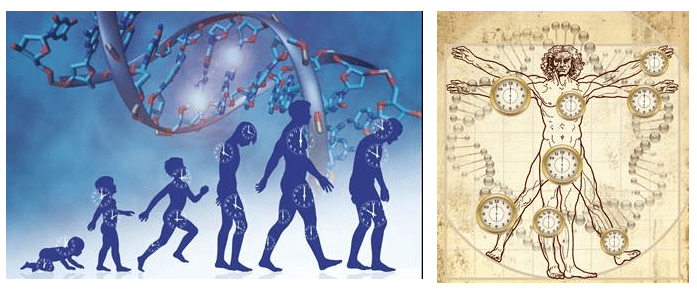
Once each human comes into this world, we’re given a clock whose tick-tock beats to the tune of life. This clock is unique to every person because the pace with which it’s ticking is different, as the clock is wound up by epigenetic changes in the genome. This is the metaphorical conclusion of a groundbreaking study published by biostatisticians at the University of California, Los Angeles. Simply put, some people are destined to biologically age faster than others, even when all things like smoking, eating healthy or exercising are equal. There’s reason to believe these epigenetic changes can be reversed, with far-reaching implications for research in longevity.
Can we wind back the clock?
Steve Horvath, the lead researcher of the study from UCLA, and colleagues, analyzed blood samples collected from 13,000 people, sequenced their genomes, then studied the methyl levels at 353 specific sites. Previously, Horvath’s group showed that the methyl levels of these sites rise and fall according to a specific pattern as the person ages and this pattern is consistent across the whole population.
When the scientists completed their survey, about 2,700 of the initial participants had died. Things like smoking, blood pressure, and body weight were still the best predictive factors for life expectancy but the aging rate was also significant. In other words, some people could live the same healthy lifestyles but die younger or older simply because their internal biological clock is ticking faster or slower.
“Our findings show that the epigenetic clock was able to predict the lifespans of Caucasians, Hispanics and African-Americans in these cohorts, even after adjusting for traditional risk factors like age, gender, smoking, body-mass index and disease history,” said Brian Chen, the study’s first author and a postdoctoral fellow at the National Institute on Aging.
The team found that for 5 percent of the population that ages the fastest, there’s a 50 percent greater average risk of dying at any age. For instance, Horvath mentions a fictitious case study involving two 60-year-old men. Pete is ranked in the top 5 percent of the population that ages the fastest while Joe is classed in the 5 percent of the population that ages the slowest. If both lead stressful lives and smoke tobacco, then Pete has a 75% chance of dying in the next 10 years compared to a 46% chance for Joe.
Horvath, who is 48 years old, took his own test and found he’s actually five years older, biologically speaking.
The findings published in the journal Aging partially explain why men on average die younger than women. In the U.S., life expectancy for women is 81.2 years; for males, it’s 76.4 years. Horvath says that even by age 5 differences in aging rate can be observed. By the time people are 40 years old, the biological age gap opens up to about 1 to 2 years.
“We must find interventions that prolong healthy living by five to 20 years. We don’t have time, however, to follow a person for decades to test whether a new drug works.” Horvath said. “The epigenetic clock would allow scientists to quickly evaluate the effect of anti-aging therapies in only three years.”
If you’re good with data sets and had your DNA sequenced in the past, there’s a tutorial written by Professor Horvath that will teach you how to calculate your biological age.






